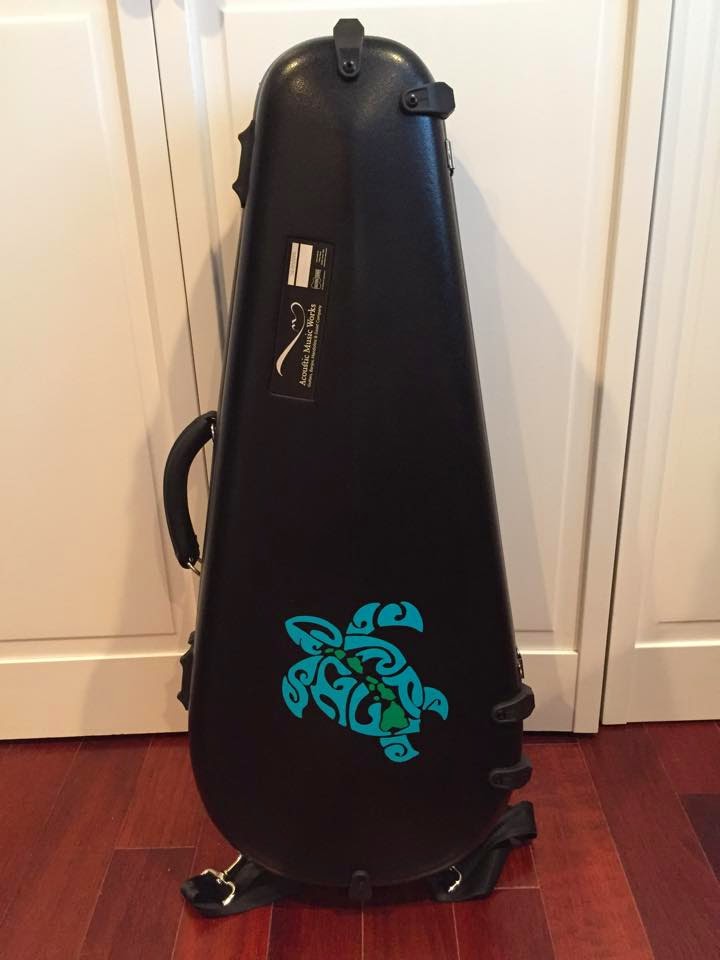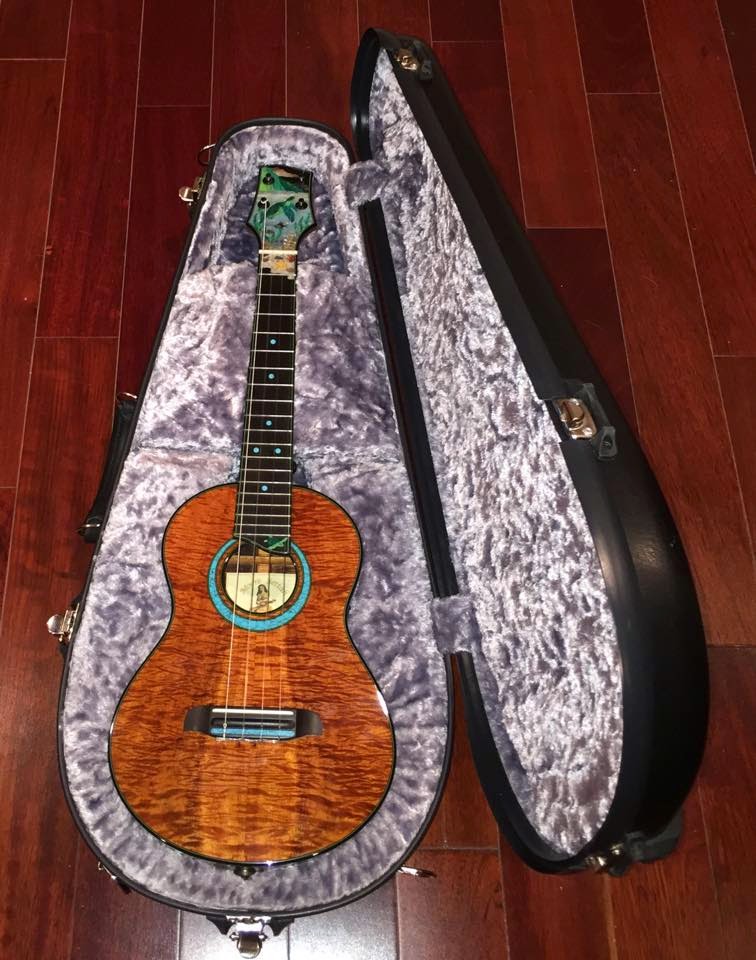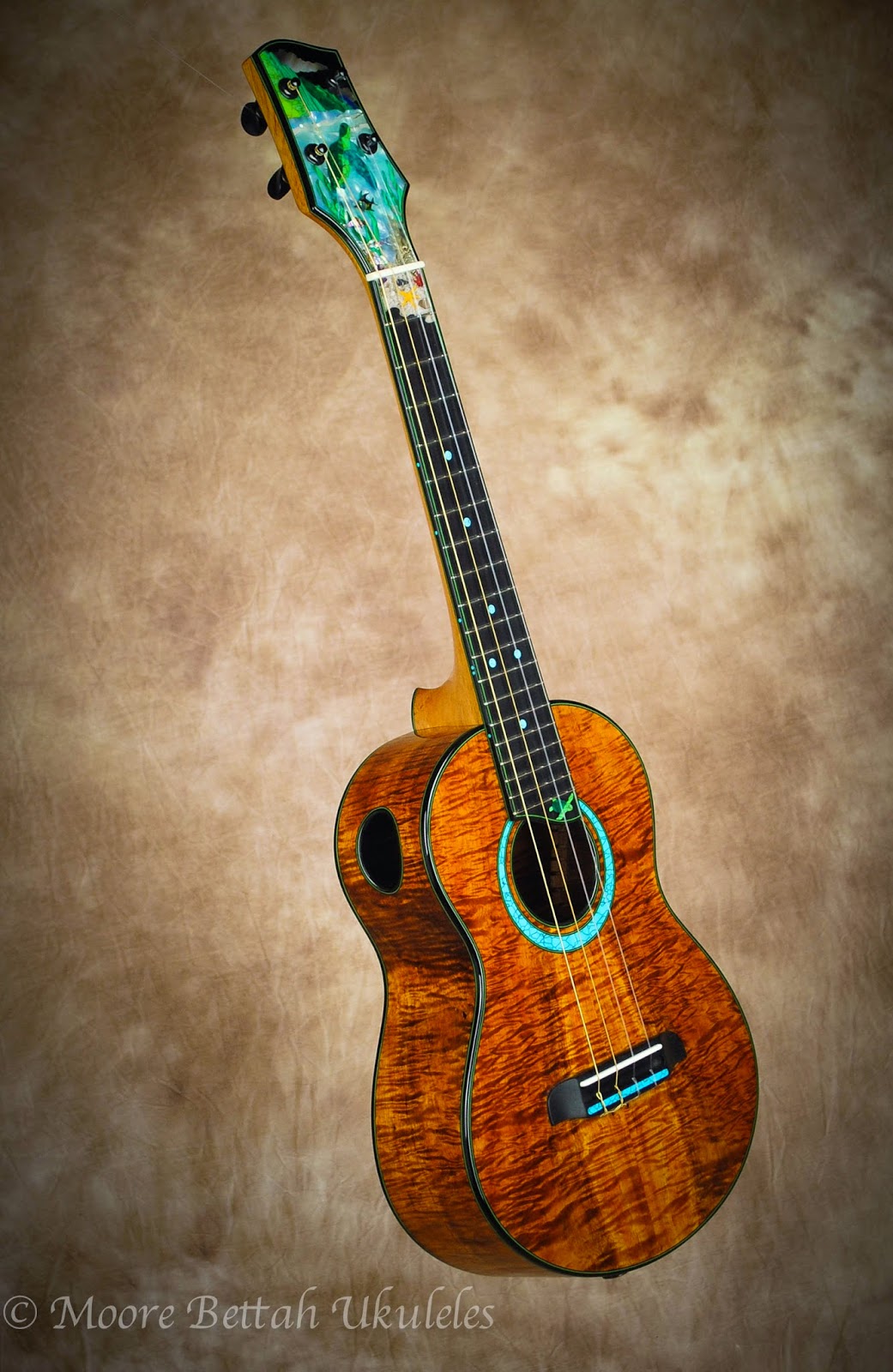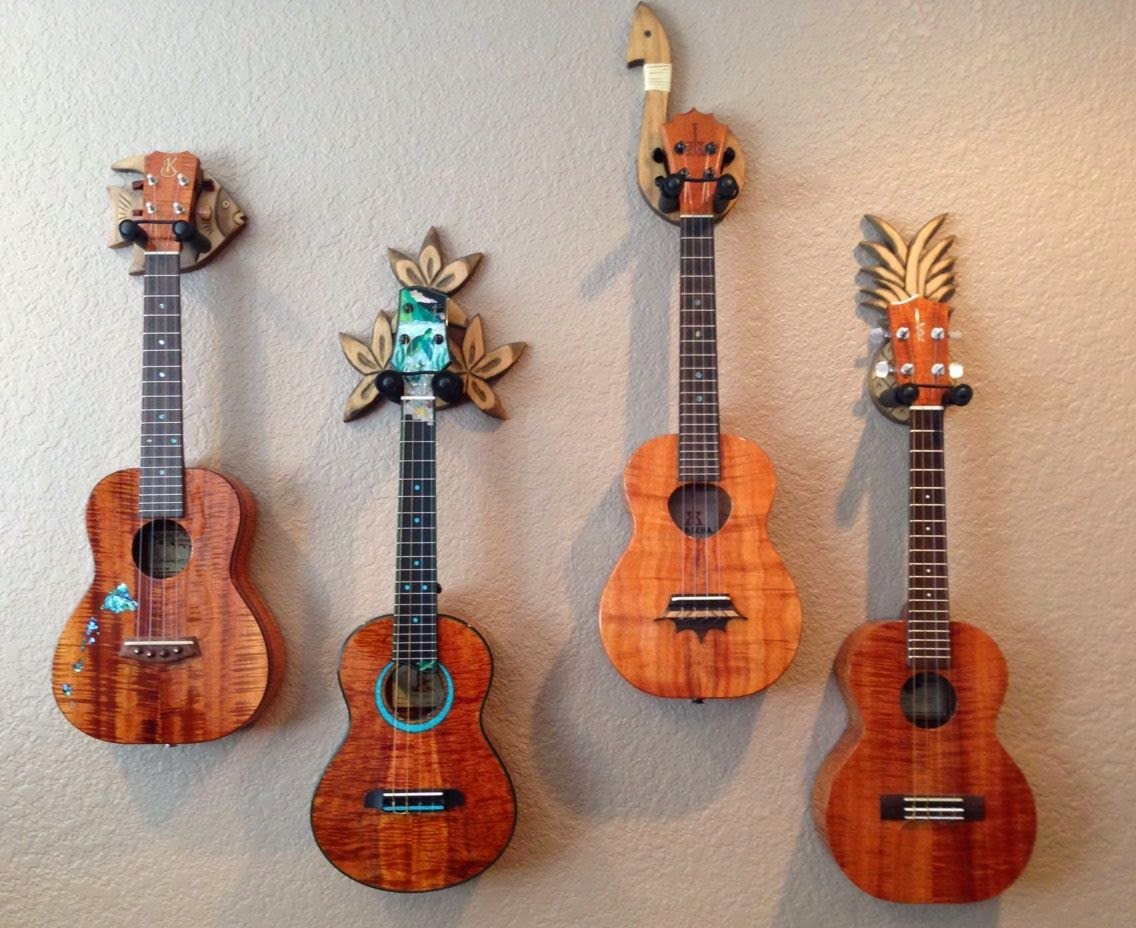Sure enough, the case did crack at one point from an incident like that. It is still totally usable, but may not be a waterproof as it once was. I still plan on using it around town (for kanikapila or lessons) and on cruises (where I am driving to the pier, not flying) as it is still super light and I love the turquoise color.
But I needed to get something more sturdy for my new Moore Bettah uke. So I splurged and ordered a custom made Calton case for it. I have now completed my first trip with this case and I'm very happy with its performance.
When you order a Calton, you go through a dealer (mine was Acoustic Music Works) -- you send them a tracing of the instrument, as well as measurements of everything from the width of the headstock to the length of the neck. All in all, there are fifteen separate things to measure. http://static.squarespace.com/static/525d6385e4b0be2ae634fdc6/t/535fa621e4b032825e5682c6/1398777377823/Mandolin%20template%20-%20form.pdf
Since math is not my forte, I had my spouse double check all of my measurements and my tracing. Then we sent it off and about a month later my case arrived.
I chose the black exterior with silver interior -- but to jazz it up a bit, I added a custom decal in turquoise and green of my tattoo (a honu with the Hawaiian island chain inside of it).
The case is heavy (at least compared to the Kamoa fiberglass ones), but very sturdy. The padding is a super thick plush velvet. The measurements were perfect and it fits like a glove. It cradles the neck perfectly, and even takes into account leaving space for the input jack.
I also really like having the storage compartment -- something my Kamoa lacks. It is quite roomy, with plenty of space for five sets of extra strings (three different brands), a tuner, a hygrometer, a string winder/cutter, extra batteries, a strap and a humidifier.
I could not be happier with this case, and plan to use it on every flight I take from now on. I would never use it locally (as it is quite heavy in comparison to my Kamoa) but I now rest with ease knowing my beloved ukulele is well protected in the overhead compartment -- safe from errant wheelie bags.
But I can't speak highly enough about the Calton. It is the best overall case I have ever owned -- custom made for the best ukulele I have ever owned. It was expensive, and probably not "worth it" but it does provide peace of mind for a one of a kind instrument that is irreplaceable.



















